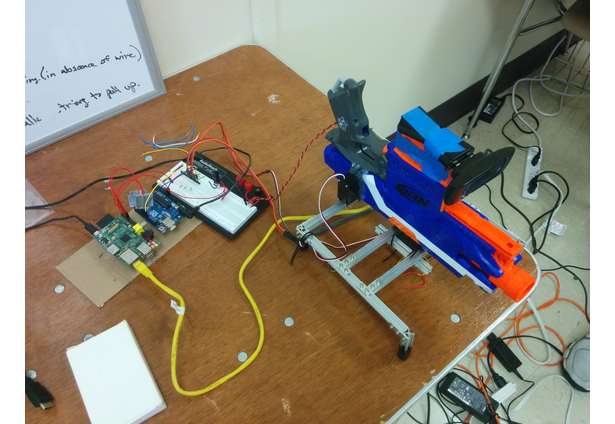A simple idea that’s done very, very well is a thing of beauty — even more so when it’s an idea that is, at its core, driven by a humane sensibility.
This past weekend’s GeauxHack, otherwise known as Louisiana State University’s first ever hackathon, saw a very fine example of this win first place amidst a formidable field of hacks and hackers. The winning hack, Sign2Line, capitalizes on LeapMotion technology to create avideo sensor translator that converts American Sign Language (ASL) into readable text. Created by three Texas A&M University students – Eleni Mijalis, Karrie Cheng, and Devan Huapaya – the hack sounds like something that should have existed a long time ago, but unfortunately doesn’t.
Take a look at how it works:
Sign2Line is straightforward, elegant, and incredibly useful. It’s a great piece of accessibility tech as well as a great showcase of LeapMotion’s potential applications beyond gaming, design, and desktop interfacing. Really makes you think, too — if you round it out with a complementing speech-to-text software and hook it up with the Oculus Rift (or Google Glass, even), can communication between an ASL and non-ASL speaker finally be seamless? The head spins.
GeauxHack also saw a host of fascinating hacks, including the delightfully named Kinect-a-Moog. Using a deconstructed and reverse-engineered Moog Minitaur Synthesizer and a Kinect (I’m detecting a pattern here), Kinect-a-Moog is a hack that allows for the creation of music through human movement. Built by a resident sonic arts collective, the particular utilization of the Moog Minitaur Synthesizer meant that the resulting performance was strictly within the experimental music genre — wandering and unspecific, yet perfectly entrancing. Check out the demo:
There are definitely mass-market applications for this. Large-scale EDM concerts and raves, for instance, where a full-scale integration of this hack could well push the boundaries of audience participation. And perhaps different other kinds of digital instrument integrations — for some reason, the predominant image that keeps coming back to me is the collective singing in an English soccer stadium during match-time. Here’s hoping that the Kinect-a-Moog team keeps pushing forward with this into the great unknown.
 GeauxHack also featured goofy, quirky fare. I’m a huge fan of the Geaux Turret, pitched most eloquently as a Web-Controlled Nerf Gun Turret. To quote from their ChallengePost entry: “Our target users are anyone interested in playing with a nerf gun over the Internet, and our targets are the victims that we will shoot with the toy.” To repeat myself in a different tone: this hack is remarkably straightforward, elegant, and utterly brilliant. Nerfgun Warfare has changed.
GeauxHack also featured goofy, quirky fare. I’m a huge fan of the Geaux Turret, pitched most eloquently as a Web-Controlled Nerf Gun Turret. To quote from their ChallengePost entry: “Our target users are anyone interested in playing with a nerf gun over the Internet, and our targets are the victims that we will shoot with the toy.” To repeat myself in a different tone: this hack is remarkably straightforward, elegant, and utterly brilliant. Nerfgun Warfare has changed.
And it will never be the same again.
Interested in seeing the demos for all the other hacks at GeauxHack? Grab some popcorn and hunker down, we’ve got the full recording of the Final Hack Demos up on our YouTube Channel and embedded down below:
All in all, the first GeauxHack was a great success, featuring a multitude of fascinating hacks as well as a wonderful spirit of community, creativity, and exploration. A big congratulations to Howard Wang and the GeauxHack organizing team for a job well done — and we’ll see them next year!
[…] during the Kinect-a-Moog demo at GeauxHacks last weekend. (Don’t know what that is? Check this […]